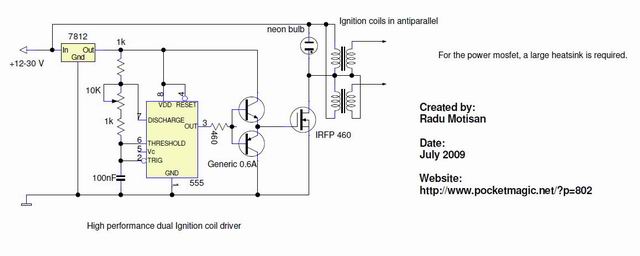
Dlya portfolio semejnoe derevo. As you can see from the schematic, there are plenty of parts to this circuit. So, lets get starter with the fundamental power components: ***** 25v 2a transformer bridge rectifier lm7805 lm7812 50v 2200 µF capacitor (X2) 25v 1000 µF capacitor 5.6kΩ resistor 2.2kΩ resistor Blue LED (X2) ***** Now, the Interrupter components: ***** 0.1 µF decoupling capacitor NE555 10kΩ linear. Part 1: Support me for more videos: Previous.
!This instructable is meant to give detailed instructions on building a solid state tesla coil based off of steve ward's mini sstc schematic. Ok, here's the disclaimer. ********************************************************* I do not hold any responsibility or your use or misuse of this information, in any way. I am not a trained professional and I cannot protect you from the voltages that are part of this project, and any damage this project may cause, wether it be to animal or material.
The user assumes all responsibility for the actions they take. ********************************************************* Well, now that that's over, lets get on to what a tesla coil actually is. A tesla coil usually has these key components: *power source *Switching circuit *Resonant Capacitor (only for drsstcs, some vttc,s and regular spark gap type coils) *Primary coil *Secondary coil The tesla coil was invented around 1891 by Nikola Tesla. His original intention for the device was to create a wireless energy distribution system.
Unfortunately, his design could not send power at even close to reasonable efficiency, as the power was almost all being wasted on corona and arcing. Today, we coilers take this to an advantage. But what males the tesla coil truly magnificent is the voltage it produces. A typical spark gap type coil takes (usually) the voltage from your wall socket, and steps it up to a couple thousand volts, where it then goes through the switching circuit, through the primary, and is seen on the secondary side as more that 200,000 volts! But how did tesla do this?
The answer is resonance. A resonant circuit, usually consisting of a capacitor and inductor, is much like a slinky. (stretched out) When you give it a push, it bounces back and forth losing momentum with each pass. However, if you keep hitting it every time it comes back, it will start to move really far back and forth at the same speed. (Or frequency) The frequency at which you hit it is it's resonance. The secondary coil is like our spring. But how do we get voltage from it? Certainly not by hitting it.
No, you have to use an oscillating magnetic field from the primary coil to excite it. A normal spark gap type TC would use a resonant capacitor and a spark gap to produce the oscillation, where as our coil (sstc) will use feedback from the coil itself to drive the primary. (using an antenna.) ~~for more info on how a tesla coil works, head on over to or the Attachments •. Our coil will be a solid state type. The schematic we are using was made by steve ward, and belongs to him.
This circuit is a relatively simple circuit as far as tesla coils go, and is a good place to start for a coiler that is new to solid state drive. I will say that you should only attempt this if you are confidant that you can work with mains voltage, as this coil does have direct mains voltage running through part of it. Unfortunately, I cannot currently put up the steps to wind the secondary coil, but I will put up an intractable as soon as possible. But generally, what you need to do is wind many tight turns of thin magnet wire around a pvc form. Don't make it too tall. A good ratio for height is that the height is about 3 to 5 times the diameter.
Anyway, what you will get out of this coil is approximately 7-8 inch sparks. (Depending on how you set the interrupter) I'll go over this later, but for now, that is what you can expect. Trust me, you'll have fun. *****EDIT: That mystery symbol appears because instructables cant handle the µ and Ω symbol in pictures.

Arcor wireless usb treiber wn4501h lf ir 2. It works here. A tesla coil is a very interesting, and fairly complicated device. Aside from building this coil, There is some special equipment I highly recommend using if you power this little beast up.